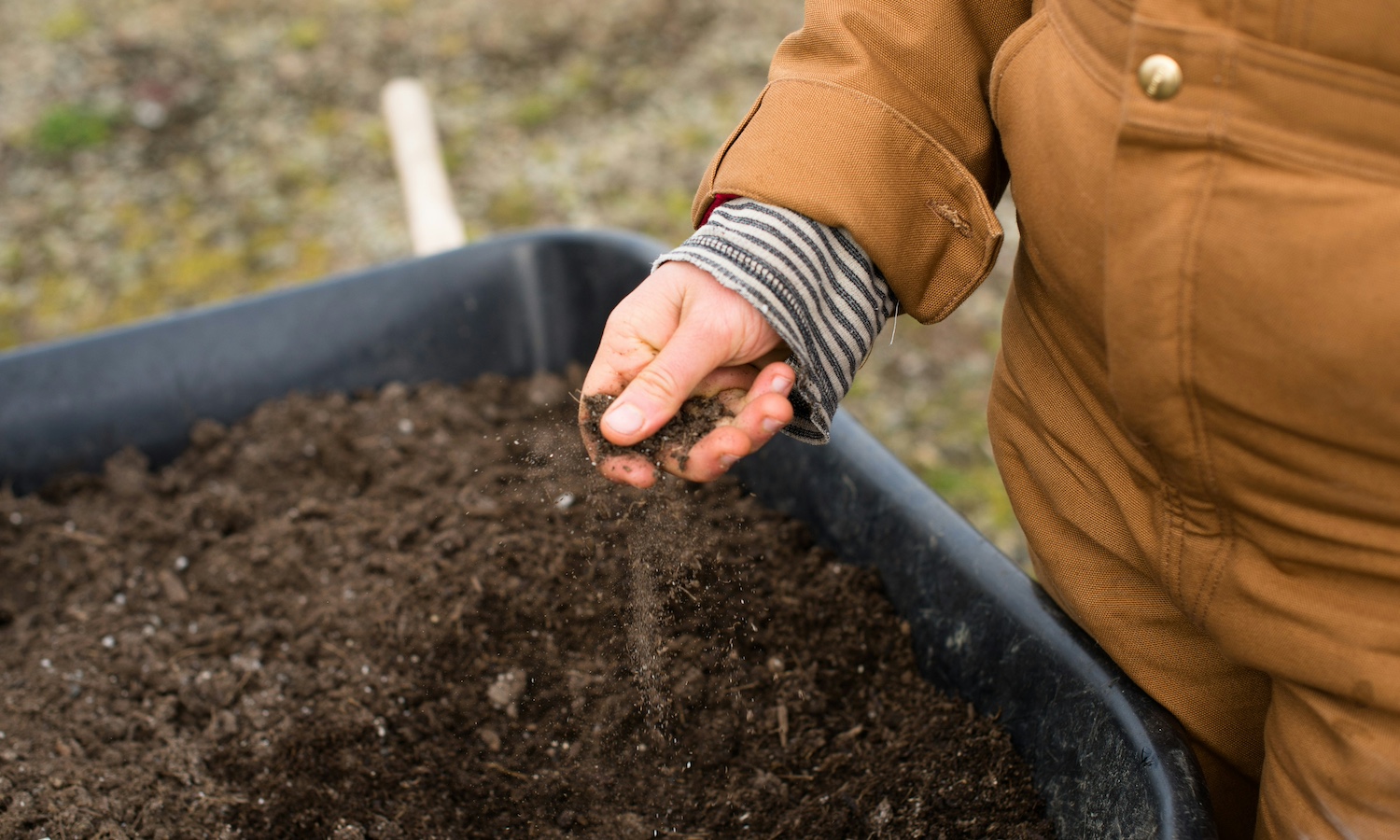A version of this piece was featured in Food Tank’s newsletter, released weekly on Thursdays. To make sure it lands straight in your inbox and to be among the first to receive it, subscribe now by clicking here.
It is obvious to most of us that food is a human right. But our discussions of food justice need to be grounded—literally—in what experts are calling a right to healthy soils.
Without well-nourished soil, “the global issues of climate change and food security cannot be addressed,” says soil scientist Dr. Rattan Lal. He’s the recipient of the World Food Prize and a Distinguished University Professor of Soil Science at The Ohio State University.
I had the opportunity to chat with Dr. Lal recently at a U.N. human rights conference on food justice in Doha, Qatar. World leaders had some crucial discussions at that summit—and, as always, I personally learned so much from Dr. Lal.
“The right to food and right to soil are inextricably linked,” Dr. Lal says.
If we want good food, we need good soil. Ninety-five percent of food nutrients come from soils, the U.N. Food and Agriculture Organization calculates—which makes the problem of soil erosion so much more concerning.
As Adrian Lipscombe, a chef and the Founder of the 40 Acres Project, put it: “If we don’t have soil health, we’re not going to have food.”
Soil erosion specifically refers to the removal of topsoil from the land’s surface, which can be caused by factors like water, wind, and tillage. Of course, some of these processes are natural—but healthy soils have the resiliency to resist excess erosion, whereas degraded soils are more vulnerable to even natural climatic cycles.
About a third of the world’s soils are currently degraded, the FAO says, and poor land management practices and hyper-industrialized agriculture is pushing that number higher.
And that has direct impacts on our food supply and climate. Poor soils can cut crop yields by up to 50 percent—which, if we’re not careful, could result in more soil being tilled to grow more crops, which degrades more soil, which pushes us closer to climate catastrophe.
And while poor soils hurt the environment, good soils can help repair the earth. Healthy soils, boosted by regenerative farming practices, can sequester more carbon from the atmosphere and more effectively store and drain water. Farmers can use techniques like no-till growing, cover cropping, rotational grazing and planting, and implementing other buffers against erosion.
“We need the soil for our physical sustenance,” says the amazing Leah Penniman of Soul Fire Farm, “but I also very much believe we need the soil for our psycho-spiritual wellness.”
Luckily, plenty of powerful, inspiring organizations around the world are pushing us in the right direction. Food and Land Use Coalition is building an evidence base to help producers and investors scale up solutions. 1000 Landscapes for 1 Billion People is bringing together individual advocates into a powerful voice for regenerative landscapes, broader than farms alone. Better Soils, Better Lives is helping heal soils among smallholders in sub-Saharan Africa with green manure and cover cropping, and the Vision for Adapted Crops and Soils is working across the African continent to build nutritious food production through soil health.
We’re seeing the power of storytelling, too. The film “Common Ground” does a great job documenting farmers who are using regenerative agriculture to heal the planet and protect our health—in economically beneficial ways. The organization behind the film, Kiss the Ground, has launched a campaign to help 100,000 more farmers transition 100 million more acres of U.S. farmland toward regenerative practices by the end of the decade.
And they’re pushing innovation. Because most grains need to be replanted every season, it’s hard for even regenerative farmers to minimize the disturbance to their land and build biodiversity, says Tim Crews, Chief Scientist & Director of the International Initiative at The Land Institute. So they’re working to highlight how perennial grains can help rebuild soils.
“Developing new perennial grains that persist year over year opens up unprecedented opportunities for farmers to greatly improve soil health as a natural outcome of agriculture,” he tells Food Tank.
But they can’t do it alone.
We need policymakers, investors, business leaders, chefs, and researchers to take serious steps toward making soil health a fundamental part of our institutional approach to food and agriculture.
Take the Soil Health Act, for example: It’s a proposed piece of legislation Dr. Rattan Lal is advocating, to complement the Clean Water Act and Clean Air Act. Let’s put this in the next Farm Bill!
Just last month, several members of the U.S. House of Representatives introduced the Innovative Practices for Soil Health Act, which would boost the U.S. Department of Agriculture’s ability to support farmers and land caretakers in adopting more regenerative methods. And I’m pleased that the Inflation Reduction Act, passed in 2022, committed a historic US$20 million toward rebuilding healthy soils, improving water quality, and conserving the land.
“You don’t have to own a farm or a ranch to make meaningful change,” says rancher Gabe Brown, of Brown’s Ranch in North Dakota. “It starts with each and every one of us. It can start in your local community with community gardens using regenerative practices. You can insist that your schools source and serve regeneratively grown food.”
He’s absolutely right.
I’m going to be blunt: If we’re not prioritizing soil health in our conversations about food justice and the human right to nutritious food, we’re falling short.
There’s so much that each of us can do to build a stronger foundation underneath our feet.
Articles like the one you just read are made possible through the generosity of Food Tank members. Can we please count on you to be part of our growing movement? Become a member today by clicking here.
Photo courtesy of Zoe Schaeffer, Unsplash







